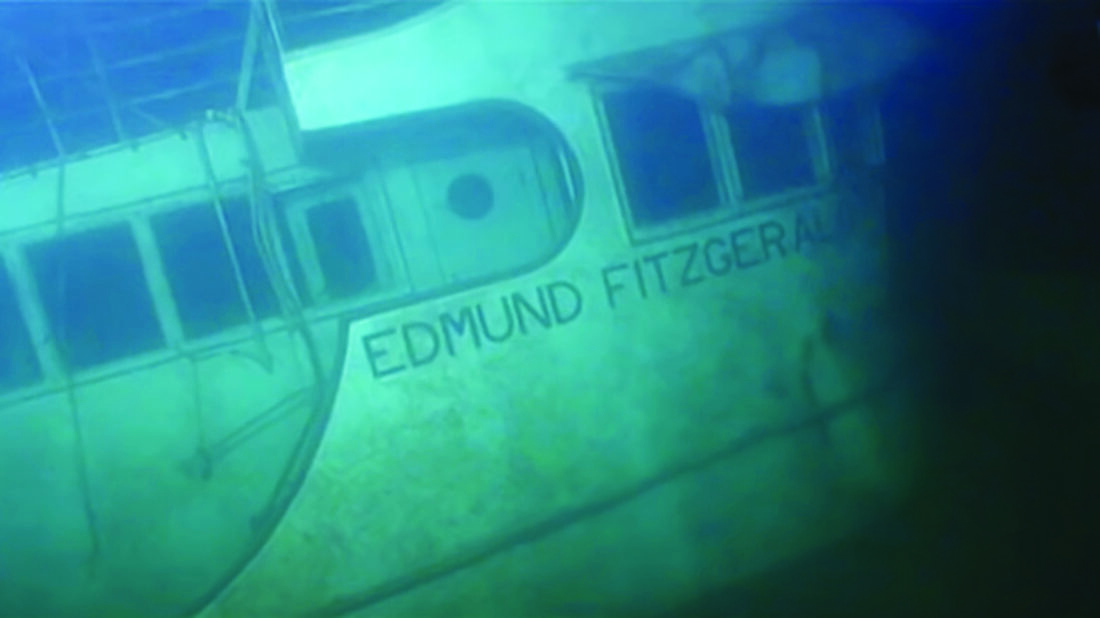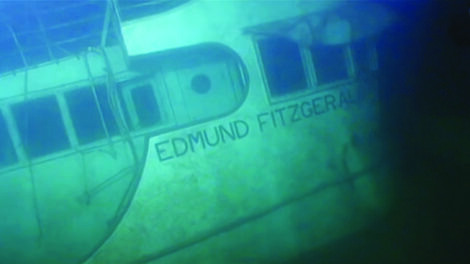The legend lives on …
A Tribute to the Edmund Fitzgerald

Photo provided by Jeffery D. Brasie
Monday, Nov. 10 marks 50 years since Lake Superior claimed the 729-foot iron ore freighter SS Edmund Fitzgerald and its crew of 29. Historic records reveal more than 350 ships litter Lake Superior’s bottom. The lake’s average depth is 433 feet with the deepest recorded at 1,333 feet. The “Fitz” is believed to be the largest Great Lakes freighter resting on Superior’s floor.
The Fitz, which could transport more than 26,000 tons of taconite iron ore pellets, was launched on June 7, 1958. The freighter’s maiden voyage was about three and a half months later on Sept. 24. The Fitz was owned by Northwestern Mutual Life Insurance Company of Milwaukee, and named after the company’s president.
The Fitz’s primary route began at the twin ports of Duluth/Superior, Wisconsin carrying iron ore to Detroit, Toledo, and Cleveland steel mills.
At about 2 p.m. on Nov. 9, 1975, with full complement of iron ore, the Fitz departed the port of Superior. The freighter was on route to a Detroit steel mill. Accompanying the Fitz was the SS Arthur M. Anderson also transporting a load of iron ore. In favorable weather both freighters headed east to the locks at Sault Saint Marie.
By the afternoon of Nov. 10, both freighters found themselves in a massive storm exhibiting hurricane force winds with ten to 30 plus foot waves. They were approximately 17 miles off shore of the U.P.’s Michigan’s Whitefish Bay.
Later that afternoon the Fitz informed the Anderson they lost operational control of both their radar systems, two vent covers and a railing fence were lost, the Fitz was taking on a list, and heavy seas were thrashing over the deck. It was beginning to snow. The Fitz’s captain asked Anderson’s captain to steam close by.
At 7:10 p.m. the Fitz radioed the Anderson, “We are holding our own.” This was Fitz’s last communication.
By 7:30 p.m. the Fitz was not on the radar nor in visual sight.
The Anderson contacted the United States Coast Guard, who because of the horrendous weather, were not able to undertake immediate rescue assistance. The USCG asked the Anderson and the nearby SS William Clay Ford to return to the Lake Superior region where the Fitz was last seen. With dangerous seas they searched, but no survivors were found. The Fitz was gone along with the crew of 29.
The Sinking Investigation
A few days after the Fitz sank in 530 feet of Lake Superior water, a U.S. Navy P-3 Orion aircraft found the wreckage by a device called magnetic anomaly detector. Over a period of five years, subsequent deep dive surveys were conducted by the Navy, USCG, and marine explorer, Jacques Cousteau. The Fitz was literally broken into two distinctive sections.
The theories from a variety of authoritative U.S. and Canadian agencies and independent researchers speculate why the freighter sank:
• Improper securing of the top-side hatches causing cargo flooding
• Mid-section structural failure, lacking inspection and maintenance
• Extreme weather, in particular with the massive Lake Superior rogue waves went west to east vs. the usual north to south configuration
• The Fitz was lifted by massive waves and came down upon a shallow shoal near Caribou Island
• Inaccurate Lake Superior sea charts
• The lack of the USCG recommending a freighter drop anchor and ride out the storm
Safety Regulations Enacted after the Fitz
The USCG investigation of Fitz’s tragic loss, with crew, resulted in 15 recommendations regarding load lines, weathertight integrity, search and rescue capability, lifesaving equipment, crew training, loading manuals, and providing information to Great Lakes vessel masters..
The National Transportation Safety Board’s (NTSB) investigation resulted in 19 recommendations for the USCG, four recommendations for the American Bureau of Shipping, and two recommendations for National Oceanic and Atmospheric administration.
The most prevalent enacted regulations included:
• In 1977, the USCG made it a requirement that all vessels of 1,600 gross register tons and over use depth finders
• Since 1980, survival suits have been required aboard ship in each crew member’s quarters and at their customary work station with strobe lights affixed to life jackets and survival suits.
• A LORAN-C positioning system for navigation on the Great Lakes was implemented in 1980 and later replaced with Global Positioning System (GPS)
• Emergency Position Indicating Radio Beacons (EPIRBs) are installed on all Great Lakes vessels for immediate and accurate location in a disaster
• Navigational charts for northeastern Lake Superior were improved for accuracy and greater detail
• NOAA revised its method for predicting wave heights
• The USCG rescinded the 1973 Load Line Regulation amendment that permitted reduced freeboard loadings
• The USCG began the annual pre-November inspection program recommended by the NTSB. “Coast Guard inspectors now board all U.S. ships during the fall to inspect hatch and vent closures and lifesaving equipment.”
Fitz Memorial and Archives on Display
A memorial is on the Lake Superior shoreline near Whitefish Point in the eastern U.P. The ship’s bell is on display at Michigan’s Great Lakes Shipwreck Museum in Paradise.
In 1974 the Fitz lost its 12,000-pound starboard bow anchor in the Detroit River. It was recovered and is on display at Detroit’s Dossin Great Lakes Museum on Belle Isle. A Fitz lifeboat and accessories are on display at Sault Sainte Marie’s Steamship Valley Camp Museum.
Jeffrey D. Brasie is a retired health care CEO. He frequently writes feature stories and op-eds for various newspapers, magazines, and social media sites. As a Vietnam-era veteran, he served in the U.S. Navy and U.S. Naval Reserve. He served on the public affairs staff of the Secretary of the Navy. He grew up near the tip of the mitt and resides in suburban Detroit.



